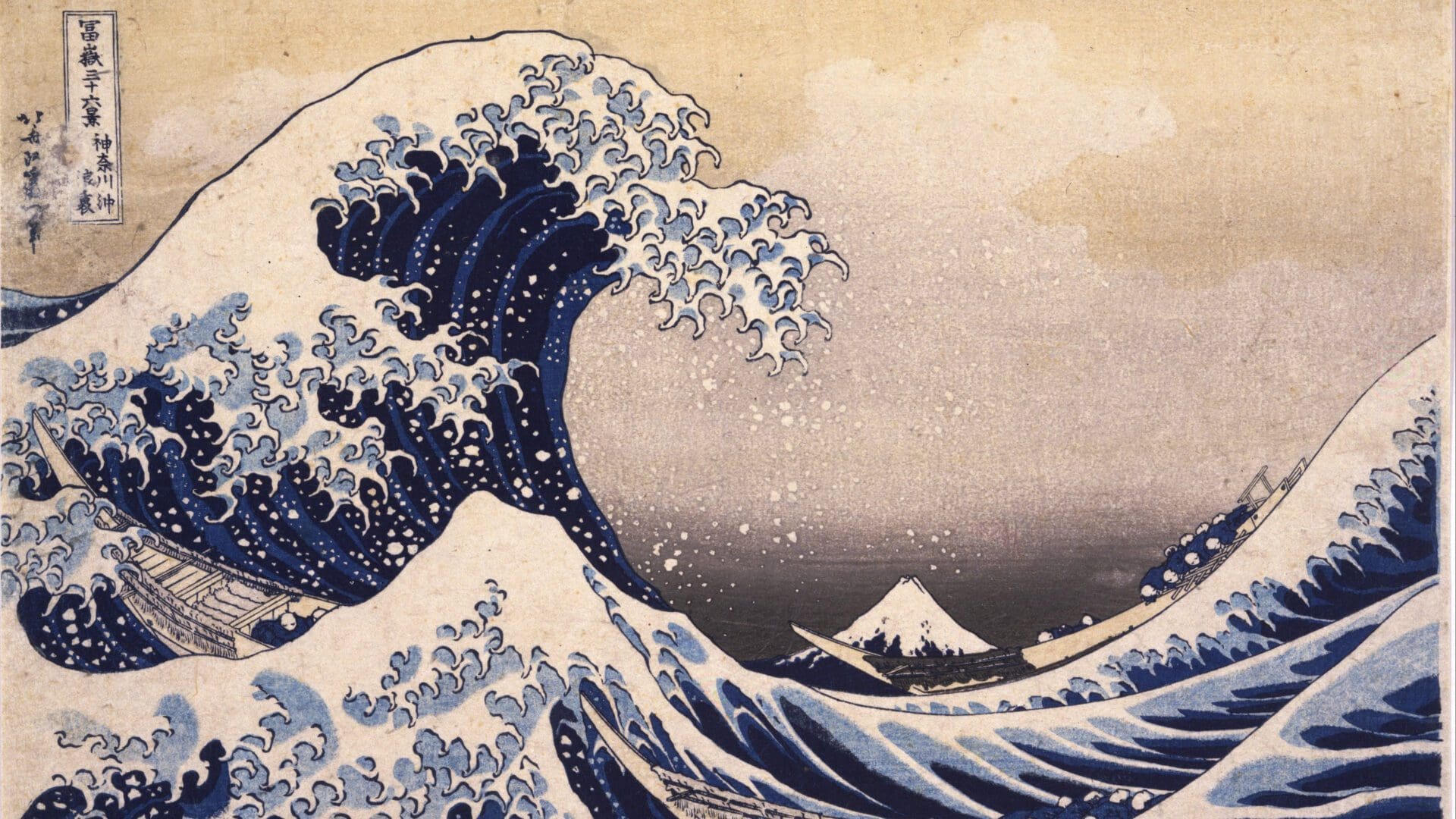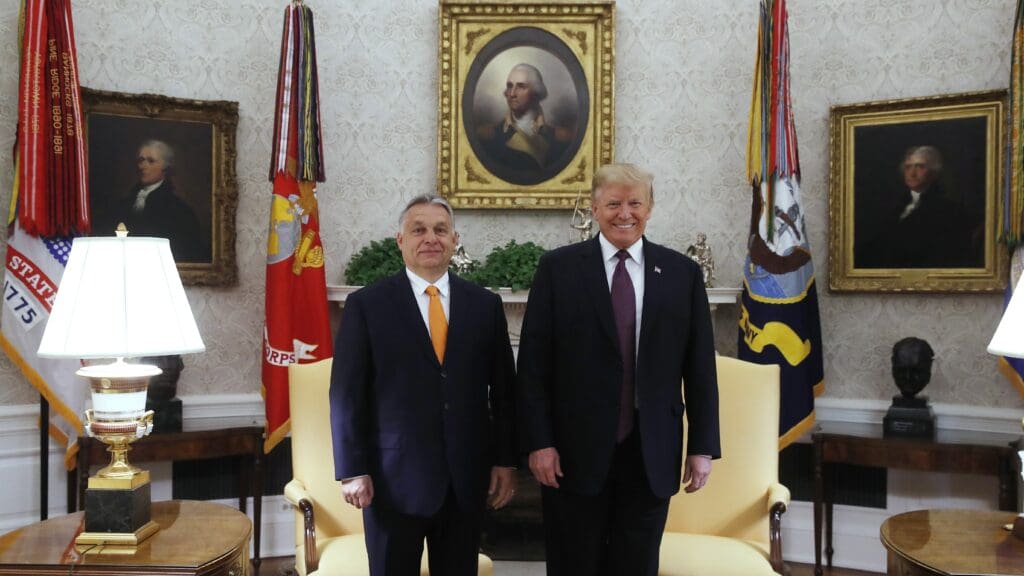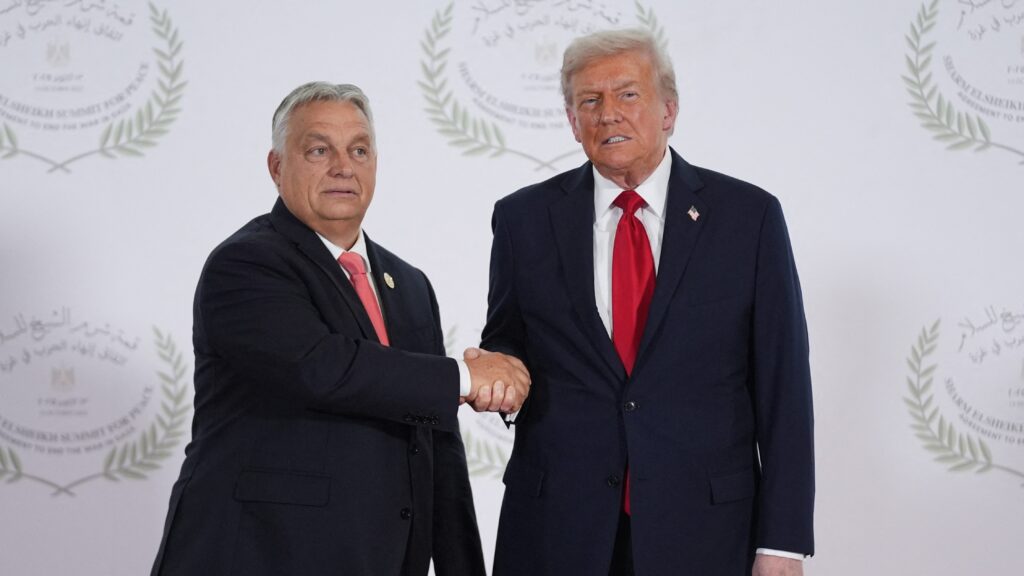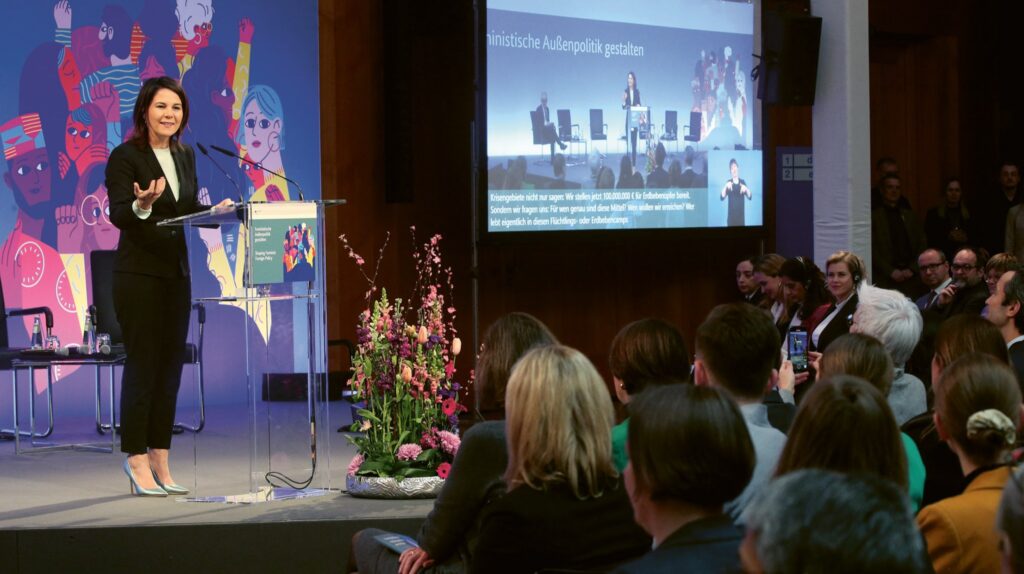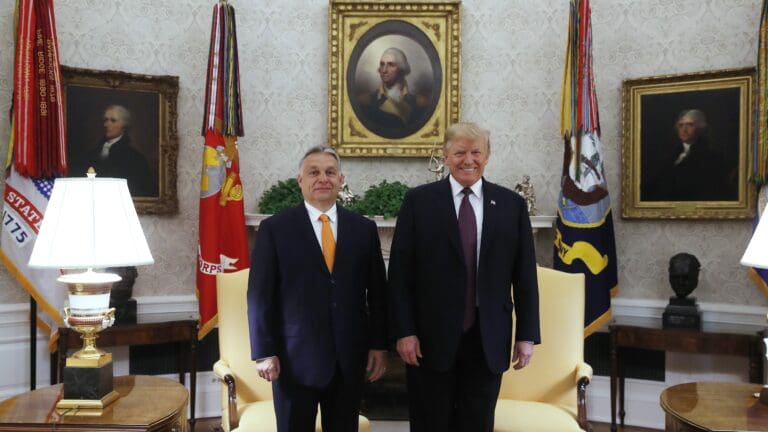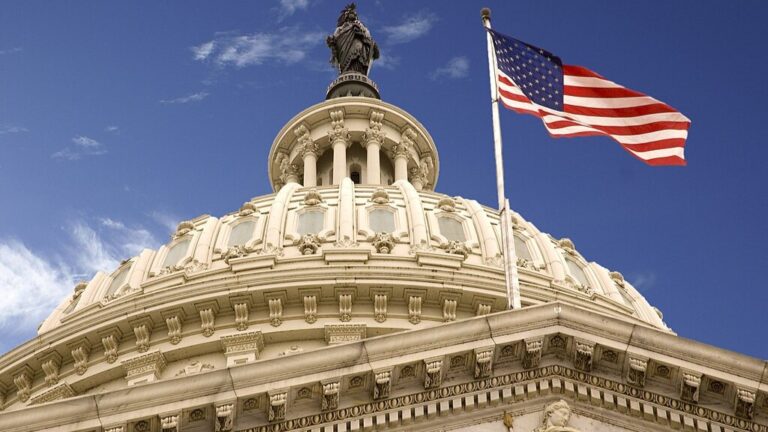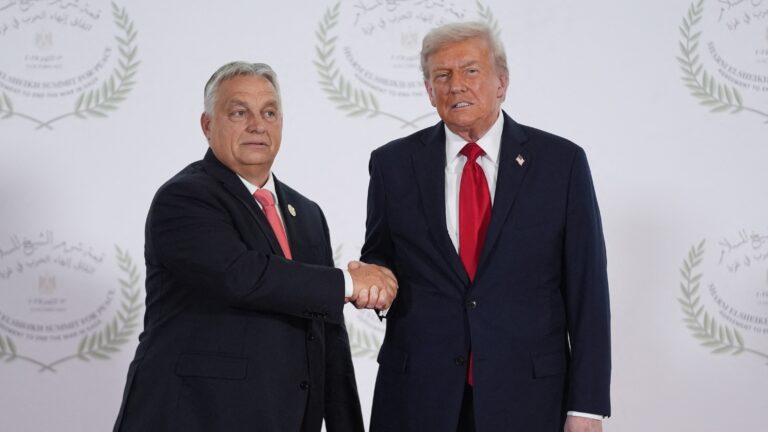This article was published in Vol. 3 No. 2 of the print edition.
When it comes to foreign policy, in terms of the ability to attain national interests despite a scarcity of national resources, Japan is deservedly regarded as an equilibrist without equal. As we shall see shortly, it has been working hard for the past few decades to earn and retain that distinction. Even though Hungary is comparable to Japan in terms of energy dependence, this analogy is alas hardly applicable to our respective conditions with regard to geography, geopolitical situation, economic prowess, and the exigencies of security policy, to name just a few factors. It is far more difficult for Hungary to follow the same path as Japan, despite the similarity of arguments both countries have marshalled against the energy sanctions in the international predicament we find ourselves in. Specifically, both Japan and Hungary have clearly rejected sanctions as a proper response to the Russia–Ukraine War, deeming it a solution more detrimental to them than to the party being sanctioned. Both have spoken out especially vocally against the wholesale imposition of energy sanctions.
‘Both Japan and Hungary have clearly rejected sanctions as a proper response to the Russia– Ukraine War, deeming it a solution more detrimental to them than to the party being sanctioned’
Why is that? For a start, Japan and Hungary have been among the countries most dependent on imports; simply put, neither economy could function without Russian energy. While energy diversification is a popular concept that sounds attractive, Hungary and Japan have very limited means at their disposal to implement it. In both countries, a swift and radical switchover could only be carried out with enormous effort and massive resentment on the part of the population, both of which would undermine the very functionality of the two countries and their economies.
Japan is now one of the most advanced countries in the world. Emerging as a loser from the Second World War, it produced an economic miracle by the first Tokyo Olympic Games in 1964, and by the 1970s, it boasted the highest rate of industrial and economic development in all of Asia. For decades, it has been a key member of the G7, the group of the seven largest economies in the world. However, in spite of this economic miracle—the envy of every state on the planet—its geological potential and geographical situation have perpetuated a scarcity of domestic energy in the country. Japan has remained painfully reliant upon imports of materials and resources, particularly energy, where it has historically relied on the Near East for 80 per cent of its needs. The energy crisis that broke out in 1973 lasted until 1986, when crude prices finally collapsed, in part owing to the global shrinkage of demand, especially from the Soviet Union. In this way, Japan had a uniquely vested interest in organizing its international and diplomatic relations without enabling or contributing to any interruption in the flow of its energy imports. This historical experience goes a long way toward explaining the orientation of Japan’s current foreign policy. The present brief analysis focuses on exploring the background of this foreign policy, notably in the context of the first oil price explosion and the role played by Shinzo Abe and his family (1973–1986).
2022: Japan Against Self-Destructive Sanctions in the Energy Sector
The Russia–Ukraine War, which broke out in February 2022, became a de facto European crisis, and is already making it to the pages of history textbooks as we speak. The most spectacular outcome of the armed conflict outside the combatant countries has been the out-of-control spiralling of energy prices, particularly of gas and electricity, with the costs escalating to heights unseen for decades. The severity of the emerging energy crisis has been reflected in skyrocketing inflation rates.
‘Western powers have been more lenient when accepting the stance of Japan as a major economic power and important regional actor in security policy’
Japan found itself in a tight place due to the Ukraine War and the ensuing energy crisis, given that it had achieved only modest success in its efforts to remedy its dependence on foreign resources over the past decades. Since the Fukushima nuclear accident of 2011, undeniably caused for the most part by human negligence, resistance to nuclear energy had been mounting among the citizenry, forcing the government to restrict the use of several reactors.1 By March 2020, only 42 of the existing 54 nuclear reactors remained functional, with no more than a total of nine reactors operating in five power plants, and 24 being reviewed and/or dismantled. The resulting drop in energy supply, accounting for nearly 30 per cent of the country’s needs, had to be replenished. After Fukushima, in view of a destabilized Near East, and—in an eerie resemblance to the former Iranian–American conflict, which will be discussed later2—in March 2022, during the first month of the Russia–Ukraine War, Japan’s still-serving Prime Minister Fumio Kishida adopted a decision in defiance of overwhelming international pressure. He declared that Japan was not in the position to abandon its enormous, rapidly maturing gas project in partnership with Russia because that would be tantamount to putting his country’s energy security at risk. By the same token, Japan refused to step back from the Russian–Japanese LNG project Sakhalin 2.3
A summit between the EU and Japan was held in Tokyo on 12 May 2022.4 The meeting marked a radical departure from previous talks, if only because it was held in the midst of a war in Europe, and to boot in a country that had been both legally and formally at war with Russia since the Second World War, with unsettled territorial issues weighing heavily in the balance (the Kuril Islands come to mind). At the summit in question, the parties agreed to carry on with negotiations to cooperate. Preceding the event, Kishida had announced that Japan was theoretically in favour of banning Russian oil imports and that this would happen in due course, but also that Japan refused to get out of certain Russian energy projects under way. Any abrupt withdrawal would only benefit China, Kishida added.5 This is hardly surprising, given that Japan (like Hungary) is extremely reliant upon imports, including crude and gas. However, while Hungary’s resistance to energy sanctions has been considered an uncouth violation of Western solidarity, the EU seems to be more lenient with Japan, even if the two countries have adopted essentially similar views by gainsaying what they believe to be counterproductive, even self-destructive, sanctions. Indeed, in August 2022, after lengthy negotiations that had ended in the acceptance of Russian terms, Tokyo Gas unveiled a long-term LNG contract with Russia. The transaction was approved by Mitsui and Mitsubishi,6 while Osaka Gas signed a similar agreement with Russia in January 2023.7
Japan’s business circles see very much eye to eye with the political elite in this, pointing out that the state will find it increasingly difficult to finance the massive issuing of government bonds, and that the country’s fiscal resilience is bound to suffer from a protracted war in Europe. If this comes to pass, living standards in Japan will be scaled back, justifying concerns about the ability of Japanese society to handle such a downturn.8
Without Russian gas, the current global economic system may easily be plunged into crisis in the short term, as early as by the winter of 2023. This is because alternative routes have not yet been devised, and also because of the possibility that sanctioned oil and gas will be purchased by China and rising countries, including India (essentially, ‘the other half’ of the world’s economy) and at much lower prices. This latter scenario has already been staged: 80 per cent of Russian oil deliveries are now landing in ‘friendly’ countries.9 (Under the circumstances, after the initially enormous revenues, the market expects that Russia’s gas receipts will have plummeted by 2023, by as much as 50 per cent.)10 At the same time, the operational pipeline between Russia and China has a relatively narrow capacity, making the option of taking over the LNG output on Sakhalin, should Japan get out of the deal, appear a rather lucrative prospect for Beijing. Life has certainly borne out these expectations, given that (according to Indian press reports) the volume of Russian LNG deliveries to Japan grew by 211.2 per cent from 2021 to August 2022 alone, with similar growth noted recently in Russian LNG deliveries to Belgian ports.11 In terms of value, LNG gas imports from Russia have risen by more than 380 per cent.12
Japan may be the third largest economy in the world, far outstripping Russia, but the extra layout of USD 15 billion will undoubtedly tax it.13 (Remarkably, Hungary—a country with far more modest economic means and manoeuvring space—would incur costs of the same magnitude if it chose to divorce itself from Russian oil, according to Minister of Foreign Affairs Péter Szijjártó.)14 Back in early May 2022, Japan’s Minister of Economy, Trade, and Industry Kōichi Hagiuda had reason to say that it would be very detrimental for Japan to introduce an embargo on Russian oil imports on account of the invasion of Ukraine. By contrast, the international press reported, quoting Ukraine’s Minister of Foreign Affairs, that Hungary had ‘taken the EU hostage’ simply by embracing a similar view.15
To come back to the Japan–EU summit in May 2022, Fumio Kishida had well in advance signalled plans to help alleviate dependence of both Japan and other countries on Russian energy, by activating nuclear reactors.16 Japan’s heavy reliance on imported energy in the wake of Fukushima was ended by this turn in energy policy, whereby the Japanese government—in response to the Russia–Ukraine War and, similarly to France, a leading state of the European Union that has been traditionally strong in nuclear energy—announced a new reactor programme. This happened to coincide with Hungary’s own decisions on the use of nuclear energy, specifically with the construction of the Paks–II reactor block, under Russian supervision but with major suppliers from Germany and France. The Russia–Ukraine War has of course raised questions about the uranium mines as a function of European sustainability. Ukraine is the ninth largest uranium producer in the world (second only to Russia in Europe), so the potential occupation of the country by Russia will certainly redraw the map of the international market for uranium.17
The majority of Japan’s citizenry—owing to their practically oriented mindset and the consequences of the Russia–Ukraine War—no longer object to nuclear energy today. ‘We will utilize nuclear reactors with safety assurances to contribute to worldwide reduction of dependence on Russian energy’, Kishida said to an audience gathered in the financial district of London. He emphasized that ‘Restarting just one existing nuclear reactor would have the same effect as supplying 1 million tonnes of new LNG per year to the global market.’18
Flashback I: The First Oil Price Explosion (1973) from a Japanese Perspective
It is common knowledge that in 1973, oil prices spiralled out of control in the aftermath of the Arab–Israeli conflict. Moreover, the market did not have a chance to settle down for the longer term, owing to the ayatollahs’ revolution in Iran, which caused further turbulence, raising the price of crude from two dollars in 1973 to an astonishing 40 dollars per barrel in 1979.19 This left Japan no choice but to revise its national energy strategy, given that low prices in the sector had been at the fulcrum of its competitiveness in the heavy and processing industries. The oil crisis of 1973 visited a severe economic shock on the economies of both Japan and Hungary, due to the domestic energy scarcity in both countries. This is a key point of reference for examining the effects of the current Russia–Ukraine War, particularly in view of the instability of the global energy supply. Specifically, let us look at the course Japan chose to follow in its foreign policy and strategic planning during the age of the oil explosions (1973–1980).
The main reason why Japan launched its attack on Pearl Harbor in December 1941 was to catch its breath under pressure of the debilitating energy sanctions imposed by the United States and its allies. Shipments of energy carriers by sea from South-East Asia to Japan had practically ceased under the wholesale oil embargo introduced in the summer of 1941 by the United States and the Netherlands, affecting Japan and its then extensive colonies. Japan’s accounts were frozen, depriving the country of 75 per cent of its foreign trade revenues and 80 per cent of its oil imports.20
After the Second World War, Japan drew its conclusions and ensured that both its government and industry respond appropriately to the uncertain energy situation, mostly by building nuclear power plants and other domestic sources of alternative energy, profiting from research and development programmes started in the 1950s. Let us not forget that Japan had a strong track record in theoretical-academic groundwork. In 1965, Shin’ichirō Tomonaga (1906–1979) became the second Japanese scientist to be awarded the Nobel Prize in physics, and is still considered one of the doyens of quantum dynamics. He had been preceded as a Nobel laureate by his compatriot Hideki Yukawa (1907–1981), recognized as the progenitor of the theory of nucleons, who described the interactions between neutrons and protons as the two particles forming the nucleus. By comparison, as is also well known, Hungary was a good two decades behind in stepping on the path of nuclear energy. The construction of the first, and to this day only, nuclear power plant started in 1976 and was completed in 1982. Ever since, the reactors at Paks have served as a mainstay of Hungary’s electricity supply.
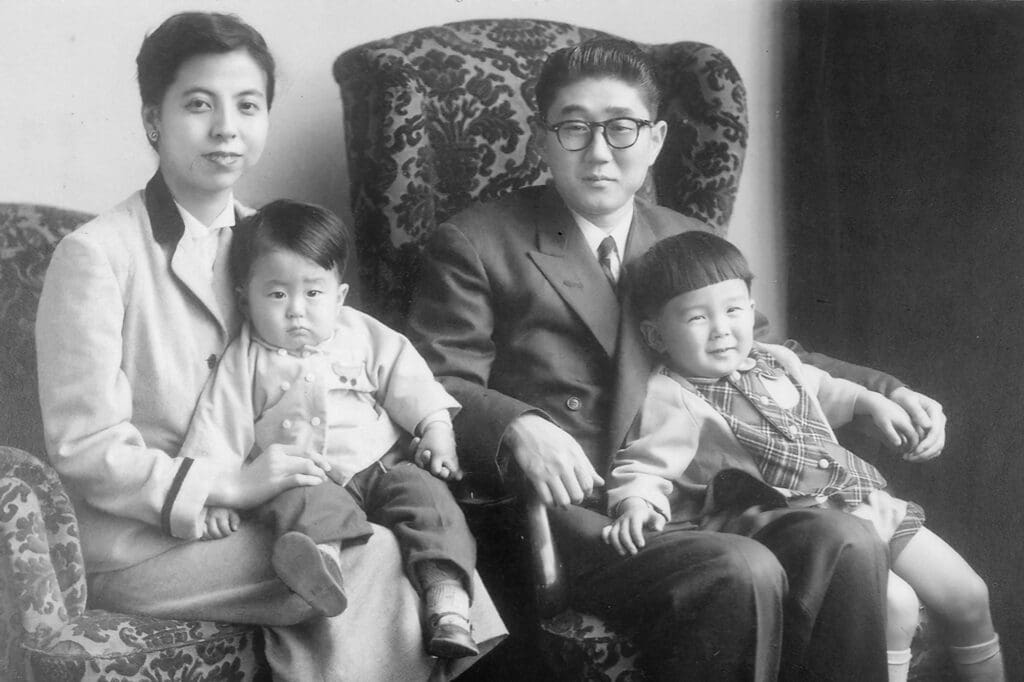
Hungarians at the time did not know much about Japan, nor do they today. During the first oil crisis, in 1973, the Arab and Islamic countries sanctioned the West for supporting Israel’s barely twenty-day-long Yom Kippur War, inflicting severe inflation and recession. After the announcement of the oil embargo, Japan gave up its neutrality in the Arab–Israeli War. It moved to condemn Israel (if on a lower level) based on Resolution 242 of the UN’s Security Council and even sided with the cause of Palestinian self-determination,21 all the while contemplating the further diversification of its sources of energy.22 This was all the more imperative in light of the oil exporting countries’ unrelenting use of their oil as a weapon of extortion against both the United States and Western Europe. Japan was facing a harrowing dilemma as a country that had never been ‘Western’ in its own right, but was no longer a developing power either. It had owed its economic success predominantly to inexpensive energy, virtually all of it sourced from imports.
Furthermore, the oil troubles of 1973 posed the threat of an exceptionally severe crisis in the food industries, particularly for those developing and developed countries that had relied heavily on imports not only for their energy but for their agricultural products as well. At the time, Japan was the only Asian country on a par with the developed West and with membership in the exclusive G7 club. Its arable land also constituted barely 14 per cent of its total mainland surface.23 As a result, Japan sourced approximately 60 per cent of its agricultural products and at least 90 per cent of its corn needs from imports, and remained the world’s largest importer of that grain until 2020.24 In addition, it obtained 90 per cent of its total consumption of soy beans, a staple in the Japanese diet, from the United States.25 (To make things worse, in the summer of 1973, the Nixon administration issued a wholesale ban on soy bean exports, setting off alarm bells in Japan.) In addition to its dependency on food imports, Japan sourced almost its entire energy consumption from abroad, most of it from the Middle East: the volume shipped from the Persian Gulf amounted to 45 per cent of Japan’s total imports, including 38 per cent supplied by Iran alone.26 In short, Japan relied on crude oil imports to such a degree that an oil blockade in the Persian Gulf enforced by American navy vessels, or a full-scale package of oil sanctions, would cause the Japanese economy to fold in a matter of weeks. It is for good reason that the country in those days was often referred to with the metaphor of a ‘fragile flower’.27
The oil crisis struck a particularly raw nerve in the island state because in the first half of the 1970s (with the exception of 1971) it achieved very impressive GDP growth rates of around 8 per cent, comparable to Hungary’s performance in 2021, while the United States and the United Kingdom posted figures at least 2 percentage points lower. By contrast, inflation ran amok, surpassing 23 per cent in 1974, 5 and 10 percentage points higher than in the United States and the UK, respectively. The situation in Japan proved bad enough for the Paris-based OECD to issue a warning that inflation in Japan had become ‘intolerable’.28 It is no exaggeration to say that in those days Japan—not unlike East European countries today, especially Hungary, which has been breaking its growth records for years—was fighting for its very survival.
Flashback II: The Abe Family Legacy—Conservatism and Pragmatism as a Means of National Sovereignty
Minister of Agriculture Shintaro Abe—who stood for conservative values on a liberal democratic platform—quickly recognized the peril for Japan, and became an early adopter of computer technology to help gauge the second major consequence of the oil crisis after the skyrocketing background prices: the likely severity of the food crisis waiting in the wings.29 The Japanese agriculture ministry—in some ways harking back to the legendary foreign study missions headed by Tomomi Iwakura,30 Minister of the Right during the Meiji period—dispatched four study delegations abroad in 1974 to survey expected food yields worldwide, especially those of milk, meat, rice, soy, wheat, and corn. They concluded that a serious scarcity of these staples was likely to develop by the 1980s. The government calculated that staples required for the country’s food supply needs might decline in quantity by as much as 70 to 80 per cent. Quite understandably, the issue became a leading political priority, given that nothing less than feeding the population was at stake. The order of magnitude and trend of the predictions turned out to be spot-on. Between 1983 and 1985, for instance, Ethiopia, a nation of 40 million, was inflicted by what proved to be the largest famine of the twentieth century, affecting 7.75 million and causing an estimated 300,000 to 1.2 million people to starve to death. (The 1985 Live Aid concert and the hit We Are the World came about as a project to benefit the victims of the tragedy, and involved the crèmedelacrème of the pop industry.)
Japan thus realized that, in international politics, it had to proceed with prudence and great circumspection, adhering to nothing but its own interests. During the Iranian–American tensions that escalated a few years later, in the 1980s, Japan pulled off another impressive balancing act by maintaining close relations with the United States while managing to forge a partnership with an Iranian state bogged down in hostility toward the West. By then Minister of Foreign Affairs, Shintaro Abe—always keeping by his side his son, Shinzo Abe, who would later become the most successful and longest-serving Japanese prime minister of all time, and who accompanied his father as secretary on the latter’s talks with vital implications for the nation—toured the Gulf states several times to great acclaim. On these visits, by casting Japan in the role of a neutral state, he succeeded in preventing his country’s economy from buckling under the weight of the Arab sanctions imposed on the West. In other words, in the midst of the raging oil wars, the Far Eastern country saved its economy from being strangled to death by the oil shortage. The most important international actors tacitly resigned themselves to this diplomatic status quo, conceding Japan’s argument that its special, fragile position left it no choice but to follow a path diverging from the mainstream Western approach. Of course, the West also condoned the arrangement in recognition of the greater elbowroom of Japan owing to its own economic prowess as a G7 nation and its geopolitical situation neighbouring China, whose economy had been developing rapidly. Regardless of these considerations, the West never let up pressure on Japan to cut back on its partnerships with ‘hostile regimes’, including Iran. Eventually, after six years, Japan was indeed forced to cancel its participation in the Iranian oil project, one of the largest of its kind in the world, which had proved especially advantageous for Japan.31
‘Western opinions about and criticism of Hungary…have allowed economic reason to be overwritten by political expectations and debates over the sanctions on Russian energy’
It was at this juncture that the Japanese administration resolved to accord a greater role to domestic nuclear energy. Consequently, the country embarked on intensive research and development, and made remarkable progress, particularly in terms of economizing with its resources and energy, and developing alternative solutions. A number of state-sponsored programmes were launched to support high-priority sectors such as integrated circuits, computer-controlled machines and tooling, industrial robotics, as well as materials, including radically new, space-age compounds. This process eventually inaugurated a revolution in material science, which in turn resulted in novel products brought to market. Thanks to this bold strategic decision, Japan gradually executed a shift away from an energy-intensive economic model to one requiring less energy but generating greater added value, and the resulting products have hung on to most of their competitiveness to this day. Meanwhile, the sectors characterized by wasteful energy uptake became devalued and yielded prominence to the design and manufacture of microelectronics and electronic products—a sector which doubled in size from 1970 to 1980.32 (Of course, this did not come out of the blue, as the leading American technology company IBM had commenced production in Japan in 1967, and was in part responsible for the fact that, by the 1990s, Japan was manufacturing 70 per cent of the world’s chip supply.)33 The radical transformation of Japan’s industry proved very fruitful indeed. The highest growth was noted in the manufacture of VCRs, CD players, video cameras, and (personal) computers, which took American and Western European markets by storm. By the 1980s, Japan had taken over from Switzerland and the United States as the world’s foremost manufacturer of watches and television sets, respectively.
Speaking of America, in times of great international tension, the United States has always benefited from having Japan by its side as a loyal but universally recognized ‘neutral’ partner in conflicts centred on the Near East. A case in point was 2019, when Shinzo Abe—following in his father’s footsteps on the next level, now as a long-serving prime minister—undertook a peace mission mediating between the United States and Iran.34 (Subsequently, the situation got out of hand when the United States backed out of the nuclear deal with Iran, going so far in 2022 as to commission a drone to take out Qasem Soleimani of the Islamic Revolutionary Guard Corps.) Even so, Japan continued to enjoy the support of Russia in its efforts to alleviate tensions between Iran and the United States. Shinzo Abe, by then recognized as a great statesman and the doyen of international politics, met with Russian president Putin no fewer than fifteen times, according to the records of the Japanese administration.35
Summary
When it comes to reactions to the Russia–Ukraine War, in light of the experiences and various reports, the Western powers have been more lenient when accepting the stance of Japan as a major economic power and important regional actor in security policy. In comparison, Western opinions about and criticism of Hungary—a landlocked country with no recourse to imported gas except through pipelines, the only way to provide its citizenry with energy at an affordable price—have allowed economic reason to be overwritten by political expectations and debates over the sanctions on Russian energy.
Japan’s strategic move in response to the first oil crisis was to move away from an energy-intensive economic model towards one requiring less energy but generating greater added value, in order to promote a new economy founded on nuclear energy in the interest of maintaining its competitive edge.
As Japan’s example continues to illustrate, hope and one’s true objective must never be forgotten, let alone given up. For Hungary, as for Japan, national interests and the progress of the nation constitute both the foremost goal and the means to achieve it.
Translated by Péter Balikó Lengyel.
NOTES
1 Rob Gilhooly, ‘Fukushima Nuclear Accident down to Human Factors’, New Scientist (9 July 2012), www.newscientist.com/article/dn22031-fukushima-nuclear-accident-down-to-human-factors/, accessed 4 March 2023.
2 ‘Nuclear Power in Japan | Japanese Nuclear Energy’, World Nuclear (29 August 2020), www.world-nuclear.org/information-library/country-profiles/countries-g-n/japan-nuclear-power.aspx, accessed 4 March 2023.
3 ‘Japan Will Not Abandon Sakhalin-2 LNG Stake, PM Kishida Says’, Reuters (31 March 2022), www.reuters.com/world/asia-pacific/japan-will-not-abandon-sakhalin-2-lng-stake-kishida-says-2022-03-31/, accessed 4 March 2023.
4 Ministry of Foreign Affairs of Japan, www.mofa.go.jp/region/europe/eu/summit/index.html, accessed 4 March 2023.
5 ‘Japan to Take Time Phasing out Russian Oil Imports, Says PM Kishida’, Reuters (9 May 2022).
6 ‘Tokyo Gas Signs Long-term LNG Contract with New Sakhalin-2 Operator’, Reuters (30 August 2022), www.reuters.com/business/energy/tokyo-gas-signs-long-term-lng-contract-with-new-sakhalin-2-operator-2022-08-30/, accessed 4 March 2023.
7 ‘Osaka Gas Signs LNG Contract with New Operator of Russia’s Sakhalin 2’, Reuters (17 January 2023), www.reuters.com/business/energy/osaka-gas-signs-lng-contract-with-new-operator-russias-sakhalin-2-2023-01-17/, accessed 4 March 2023.
8 Japan Centre for Economic Research, ‘Japan’s Economy after Russian Invasion of Ukraine’ (1 June 2022), www.jcer.or.jp/english/japans-economy-after-russian-invasion-of-ukraine, accessed 4 March 2023.
9 Rosemary Griffin and Herman Wang, ‘Russia to Send Most 2023 Oil Exports to Friendly Countries after Output Cut Announcement’, S&P Global Commodity Insights (13 February 2023), www.spglobal.com/commodityinsights/en/market-insights/latest-news/oil/021323-russia-to-send-most-2023-oil-exports-to-friendly-countries-after-output-cut-announcement, accessed 4 March 2023.
10 Oksana Kob Zeva, ‘Reuters Analysis: Gazprom’s Export Revenue May Fall by 50% in 2023’, Reuters (14 February 2023), www.reuters.com/business/energy/gazproms-export-revenue-may-fall-by-50-2023-2023-02-14/, accessed 4 March 2023.
11 ‘Almost 50% More LNG Arrived in Port of Zeebrugge since Start of 2022’, Belga News Agency (10 May 2022), www.belganewsagency.eu/almost-50-more-lng-arrived-in-port-of-zeebrugge-since-start-of-2022, accessed 4 March 2023.
12 Dip Anjan Roy Chaudhur, ‘Japan Increases LNG Purchases from Russia’, The Economic Times (6 September 2022), https://economictimes.indiatimes. com/news/international/world-news/japan-increases-lng-purchases-from-russia/articleshow/94236138.cms?utm_source=contentofinterest&utm_medium=text&utm_ campaign=cppst, accessed 4 March 2023.
13 Daisuke Suzuki, ‘Replacing Russian LNG from Sakhalin-2 Would Cost Japan $15bn’, Nikkei Asia (22 March 2022), https://asia.nikkei.com/Business/ Energy/Replacing-Russian-LNG-from-Sakhalin-2-would-cost-Japan-15bn, accessed 4 March 2023.
14 ‘Szijjártó Péter: Magyarország nem enged, 15 milliárd euróért mondana csak le az orosz olajról’ (Hungary Will Not Back down, Stipulating EUR 15 Billion in Exchange for Backing out of Russian Oil), Portfolio (16 May 2022), www.portfolio.hu/gazdasag/20220516/szijjarto-peter-magyarorszag-nem-enged-15-milliard-euroert-mondana-csak-le-az-orosz-olajrol-545075, accessed 4 March 2023.
15 ‘Orbán “Took Ukraine as a Hostage” over EU Funding, Kyiv Says’, Politico (30 December 2022), www.politico. eu/article/viktor-orban-ukraine-war-aid-european-union-hostage-funding/, accessed 4 March 2023.
16 ‘Japan to Use Nuclear to Cut Dependence on Russian Energy—PM Kishida’, Reuters (5 May 2022), www.reuters.com/world/asia-pacific/japan-will-utilise-nuclear-reactors-reduce-dependence-russian-energy-pm-kishida-2022-05-05/, accessed 4 March 2023.
17 World Nuclear Association, ‘World Uranium Mining Production’ (2023), https://world-nuclear.org/information-library/nuclear-fuel-cycle/mining-of-uranium/world-uranium-mining-production.aspx, accessed 4 March 2023.
18 ‘Transcript: Japan PM Kishida’s Speech in London’, Nikkei Asia (5 May 2022), https://asia.nikkei.com/Politics/International-relations/Transcript-Japan-PM-Kishida-s-speech-in-London, accessed 4 March 2023.
19 Bill of Rights Institute, The 1973 Oil Crisis and Its Economic Consequences, https://billofrightsinstitute.org/essays/the-1973-oil-crisis-and-its-economic-consequences, accessed 4 March 2023.
20 Yuichi Arima, The Way to Pearl Harbor: U.S. vs Japan (ICE Case Studies, 118).
21 Khalil ShiKai, Japan and Palestine: Timeline of Main Developments and Turning Points in the Last 50 Years. Background Documents Distributed to the Members of the Joint Palestinian–Japanese Working Group in Preparation for the March 2 Online Workshop (March 2022), https://pcpsr.org/sites/default/files/Japan%20 and%20Palestine_Timeline%20of%20Relations%20ENGLISH.pdf, accessed 4 March 2023.
22 William Nester and Kweku Appiah, ‘Japan’s Oil Diplomacy: Tadema and Honne’, Third World Quarterly, 11/1 (January 1989), 72–88, www.jstor.org/stable/3992221, accessed 4 March 2023.
23 KNOEMA, ‘Japan – Arable Land as a Share of Land Area’, knoema.com, https://knoema.com/atlas/Japan/topics/Land-Use/Area/Arable-land-as-a-share-of-land-area, accessed 4 March 2023.
24 AGFLOW, ‘Japan Ranks 3rd in the Global Corn Imports’, agflow.com (11 October 2022), https://www.agflow.com/agricultural-markets-news/japan-ranks-3rd-in-the-global-corn-imports/, accessed 4 March 2023.
25 Richard Halloran, ‘Imports, the Lifeblood of Japan’, The New York Times (1 July 1973), www.nytimes.com/1973/07/01/archives/imports-the-lifeblood-of-japan-emerging-policy-is-to-guarantee.html, accessed 4 March 2023.
26 Richard Halloran, ‘Japan Braces for a Full-Scale Oil Crisis’, The New York Times (8 December 1973), www.nytimes.com/1973/12/08/archives/japan-braces-for-a-fullscale-oil-crisis-japan-whose-busy-economy.html, accessed 4 March 2023.
27 R. P. Sinha, ‘Japan and the Oil Crisis’, The World Today, Royal Institute of International Affairs, 30/8 (August 1974), 335–344.
28 ‘Japanese Inflation Called “Intolerable”’, The New York Times (12 August 1974), www.nytimes.com/1974/08/12/archives/japanese-inflation-called-intolerable-japan-inflation-studied-by.html, accessed 4 March 2023.
29 Richard Halloran, ‘Japanese Foresee Major Food Crisis’, The New York Times (29 October 1975), www.nytimes.com/1975/10/29/archives/japanese-foresee-major-food-crisis-agriculture-minister-cites.html, accessed 4 March 2023.
30 For details, see: https://iwakura-tomomi.jp/en/ iwakura-tomomi/.
31 Kiyoshi Taenaka and Aaron Sheldrick, ‘Explainer: Why Is Japan’s Abe Going to Iran? What Can He Accomplish?’, Reuters (7 June 2019), www.reuters.com/article/us-iran-japan-abe-explainer-idUSKCN1T80U9, accessed 4 March 2023.
32 Katalin Volini, Japán gazdaságtörténete (The Economic History of Japan) (Budapest: MTA KRTK Világgazdasági Intézet, 2015) 76.
33 IBM Archives, ‘Fujisawa Plant’, www.ibm.com/ibm/history/exhibits/vintage/vintage_4506VV8001.html, accessed 4 March 2023.
34 Daniel Hurst, ‘What Did Japanese Prime Minister Shinzo Abe Accomplish in Iran?’, The Diplomat (14 June 2019), https://thediplomat.com/2019/06/what-did-japanese-prime-minister-shinzo-abe-accomplish-in-iran/, accessed 4 March 2023.
35 Japan Government, ‘Prime Minister Abe and President Putin’, www.japan.go.jp/tomodachi/2016/japan_and_russia_edition_2016/moments_of_prime_minister_abe.html, accessed 4 March 2023.
Related articles:

